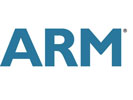Verification Engineer
60+ Verification Engineer Interview Questions and Answers

Asked in Intel

Q. How do you ensure no data loss happens in HW to SW communication?
Ensure data integrity through proper communication protocols and error checking mechanisms.
Use reliable communication protocols such as TCP/IP or UART
Implement error checking mechanisms such as CRC or checksums
Perform thorough testing and validation of the communication interface
Ensure proper synchronization between HW and SW
Implement retry mechanisms in case of communication failures
Asked in ARM Embedded Technologies

Q. Explain the architecture of SoC and its components. How is transaction done at SoC level
SoC architecture consists of multiple components like CPU, memory, peripherals, and interconnects. Transactions are done through buses.
SoC architecture includes a CPU, memory, peripherals, and interconnects
Interconnects are used to connect the components and enable communication
Transactions are done through buses like AXI, AHB, or APB
The components can be customized based on the application requirements
Verification Engineer Interview Questions and Answers for Freshers
Asked in Marquee Semiconductor

Q. How do you create a 2-to-1 line MUX using only NAND gates?
A 2 select line MUX can be created using NAND gates by cascading multiple gates in a specific configuration.
Use two NAND gates to create an AND gate by connecting the inputs of the NAND gates together and taking the output from both gates.
Use another NAND gate to create an OR gate by connecting the outputs of the two AND gates to the inputs of the OR gate.
Connect the select lines to the inputs of the AND gates and the data lines to the inputs of the OR gate to complete the 2 ...read more
Asked in Marquee Semiconductor

Q. What is setup and hold time? How does it impact digital design?
Setup and hold time are timing constraints in digital design that ensure data is stable before and after the clock edge.
Setup time is the amount of time data must be stable before the clock edge for it to be reliably captured.
Hold time is the amount of time data must be stable after the clock edge for it to be reliably captured.
Violating setup time can lead to metastability issues, while violating hold time can result in data corruption.
These timing constraints are critical i...read more
Asked in Scaledge

Q. How would you use UVM and integrate it with a C-based test case?
UVM can be used to create a testbench environment and integrate it with c based test cases using DPI-C.
Create a UVM testbench environment using SystemVerilog
Use DPI-C to integrate the c based test cases with the UVM environment
Define a DPI import function in SystemVerilog to call the c functions
Use UVM sequences to drive the test cases
Use UVM scoreboard to verify the results
Use UVM coverage to ensure complete coverage of the design
Asked in Marquee Semiconductor

Q. Please explain how bubble sort works and write the logic for it.
Bubble sort is a simple sorting algorithm that repeatedly steps through the list, compares adjacent elements, and swaps them if they are in the wrong order.
Compare adjacent elements and swap if necessary
Repeat until no more swaps are needed
Time complexity is O(n^2)
Example: [5, 3, 8, 2, 1] -> [3, 5, 2, 1, 8] -> [3, 2, 1, 5, 8] -> [2, 1, 3, 5, 8] -> [1, 2, 3, 5, 8]
Verification Engineer Jobs




Asked in Intel

Q. What are the various stages in PCIe linkup?
PCIe linkup involves several stages for establishing communication between devices.
Initialization of the link layer
Negotiation of link width and speed
Training sequence to optimize signal quality
Establishment of a data link layer connection
Configuration of the transaction layer
Exchange of transaction layer packets
Completion of the linkup process

Asked in Capgemini

Q. what is firmware, have done any hardware testing, is your product is sustainabile
Firmware is a software program that controls hardware devices. Yes, I have done hardware testing. Our product is sustainable.
Firmware is a type of software that is embedded in hardware devices to control their functionality.
I have experience in testing hardware components such as circuit boards, processors, and memory modules.
Our product is designed with sustainability in mind, using eco-friendly materials and energy-efficient components.
Share interview questions and help millions of jobseekers 🌟


Asked in Samsung Research

Q. Design a Finite State Machine (FSM) for a hallway with two detectors to track the number of people in the room, ensuring only one person can pass through the hallway at a time.
Design a finite state machine to count the number of people passing through a hallway with 2 detectors, allowing only one person at a time.
Create states for each detector and the hallway
Transition between states based on detector inputs
Use counters to keep track of the number of people passing through
Implement logic to prevent multiple people from passing simultaneously
Asked in Semilon Technologies

Q. What is Finite state Machine and write the code for it in verilog
A Finite State Machine is a mathematical model used to represent and control the behavior of a system with a finite number of states.
FSM consists of a set of states, transitions between states, and actions associated with transitions.
Verilog code for a simple 2-state FSM: module fsm(input clk, input reset, output reg state); always @(posedge clk or posedge reset) begin if (reset) state <= 0; else state <= ~state; end endmodule
FSMs are commonly used in digital design, control ...read more
Asked in Scaledge

Q. Discuss the scoreboard and how to obtain expected data.
Scoreboard is a verification component that tracks and compares expected and actual data.
Scoreboard is used to monitor the progress of a design under test (DUT) and compare it with the expected behavior.
It can be implemented using a register or a memory block.
Scoreboard can be used to check the correctness of the DUT's output against the expected output.
Expected data can be obtained from a reference model or a golden model.
Scoreboard can be used in conjunction with other veri...read more

Asked in Incise Infotech

Q. What is the process of booting in a System on Chip (SoC)?
Booting in an SoC involves initialization, loading firmware, and starting the operating system for device functionality.
Power-On Reset (POR): The SoC is powered on, and initial hardware states are set.
Boot ROM: The boot process starts with executing code from a small, non-volatile memory (Boot ROM).
Firmware Loading: The Boot ROM loads the firmware (e.g., U-Boot) from external storage (e.g., Flash memory).
Device Initialization: The firmware initializes hardware components like...read more
Asked in Scaledge

Q. What is the difference between a task and a function?
Tasks are concurrent blocks of code that can run in parallel, while functions are sequential blocks of code that perform a specific task.
Tasks can run concurrently, while functions run sequentially
Tasks can be executed in parallel, while functions are executed one after the other
Tasks are used for parallel processing, while functions are used for sequential processing

Asked in Nvidia

Q. Given two boxes, one containing 50 balls of one color and another containing 50 balls of a second color, what is the highest probability of choosing a ball of a specific color?
Maximize the probability of selecting a ball of one color from two boxes with equal numbers of balls.
You have 50 balls of color A in Box 1 and 50 balls of color B in Box 2.
To maximize the probability of selecting a specific color, choose the box with that color.
If you choose Box 1, the probability of selecting a color A ball is 100%.
If you choose Box 2, the probability of selecting a color B ball is also 100%.
Thus, the highest probability of selecting a ball of one color is 1...read more
Asked in Scaledge

Q. Write an FSM code for a pattern detector.
FSM code for pattern detector
Define states for different patterns to detect
Transition between states based on input pattern
Output a signal when a specific pattern is detected

Asked in Capgemini Engineering

Q. What is the difference between fork-join and fork-join_any?
fork-join is a parallel programming model where a task is divided into subtasks that run concurrently and join at a synchronization point.
fork-join is used in parallel programming to improve performance by dividing a task into smaller subtasks that can be executed concurrently
In fork-join, the main task is divided into subtasks using the 'fork' operation, and these subtasks are executed independently
The 'join' operation is used to synchronize the subtasks and wait for their c...read more

Asked in Tessolve

Q. Write code for handshake in UVM.
Code for Handshake in UVM
Create a sequence item for handshake
Use a sequence to drive the handshake
Implement the handshake protocol in the driver and monitor
Use analysis ports to check for successful handshake

Asked in Intel

Q. Design muxes and write code for Fibonacci series
Design muxes and write code for Fibonacci series
Design a 2:1 mux using Verilog or VHDL
Implement the Fibonacci series using a for loop or recursion
Connect the output of the mux to select between the two Fibonacci numbers
Test the design with different inputs and verify the output
Asked in Scaledge

Q. What is the difference between blocking and non-blocking assignments?
Blocking operations wait until the operation completes, while non-blocking operations do not wait and allow other operations to continue.
Blocking operations halt the execution until the operation is completed
Non-blocking operations do not halt the execution and allow other operations to continue
Blocking operations are synchronous, while non-blocking operations are asynchronous
Example: In a blocking operation, a function call will wait for the function to return before proceed...read more

Asked in Texas Instruments

Q. Draw the CMOS inverter transfer characteristics and explain the effects of varying parameters on it.
CMOS inverter transfer characteristics illustrate the relationship between input and output voltages, affected by various parameters.
Vth (threshold voltage) affects the switching point; higher Vth shifts the curve right.
W/L ratio (width-to-length) influences drive strength; larger W/L increases output current.
Supply voltage (Vdd) impacts the output swing; higher Vdd results in a larger output voltage range.
Temperature variations can shift the transfer curve due to changes in ...read more

Asked in Nvidia

Q. Write a program to print an infinite series following a given pattern.
Print infinite series of a given pattern
Use a loop to continuously print the pattern
Consider using a circular buffer to store the pattern for efficient printing
Ensure the pattern does not consume too much memory or cause overflow
Asked in Rivos

Q. How would you verify a last level cache?
Verify last level cache by running stress tests, analyzing cache hit/miss rates, and comparing performance metrics.
Run stress tests to simulate high load scenarios and observe cache behavior
Analyze cache hit/miss rates to ensure data is being efficiently stored and retrieved
Compare performance metrics before and after cache verification to measure improvements
Use tools like CacheGrind or Valgrind for detailed cache analysis

Asked in Alstom Transportation

Q. How do you understand system requirements?
Understanding system requirements involves analyzing and interpreting the needs and constraints of a system.
Reviewing the project documentation to identify key requirements
Clarifying any ambiguities or inconsistencies in the requirements
Communicating with stakeholders to ensure all requirements are captured accurately
Translating high-level requirements into detailed technical specifications
Creating test cases based on the requirements to verify system functionality
Asked in Delancey Technologies

Q. What is the difference between always and initial blocks?
In SystemVerilog, 'always' is used to describe a process that runs continuously, while 'initial' is used to describe a process that runs only once at the beginning of simulation.
always blocks are used for describing processes that run continuously throughout the simulation
initial blocks are used for describing processes that run only once at the beginning of simulation
always blocks are sensitive to changes in their inputs and execute whenever there is a change
initial blocks a...read more

Asked in Bosch Global Software Technologies

Q. What is the difference between a microcontroller and a microprocessor?
Microcontroller is a self-contained system with memory, peripherals and processor. Microprocessor is a CPU only.
Microcontroller has on-chip memory and peripherals, while microprocessor requires external memory and peripherals
Microcontroller is used in embedded systems, while microprocessor is used in general-purpose computing
Examples of microcontrollers include Arduino, PIC, and AVR, while examples of microprocessors include Intel Pentium, AMD Ryzen, and ARM Cortex
Asked in Rivos

Q. Describe an important debug that you've done.
Identifying and fixing a race condition in a multi-threaded system
Observed intermittent failures in test results
Used debugging tools like gdb and log analysis to trace the issue
Identified the root cause as a race condition between two threads
Implemented a mutex lock to resolve the issue
Verified the fix by running stress tests

Asked in Incise Infotech

Q. How can you create a protocol-agnostic testbench?
A protocol agnostic testbench allows for flexible verification across different protocols without being tied to a specific one.
Use abstract interfaces to define communication methods, e.g., `interface ProtocolInterface { ... }`.
Implement a generic driver that can handle multiple protocols by using configuration parameters.
Utilize a common scoreboard that can interpret results from various protocols, ensuring consistency in checking.
Leverage a modular architecture where protoc...read more
Asked in Sunidhi Securities & Finance

Q. Where do you see yourself in 5 years?
In five years, I envision myself as a lead Verification Engineer, driving innovative projects and mentoring junior engineers.
Leading a team of engineers on complex verification projects, ensuring high-quality deliverables.
Contributing to the development of new verification methodologies that enhance efficiency.
Mentoring junior engineers, sharing knowledge and best practices to foster their growth.
Engaging in continuous learning to stay updated with the latest technologies and...read more
Asked in V.Edu's

Q. What is polymorphism? Explain with an example.
Polymorphism is the ability of a function or method to behave differently based on the object it is called with.
Polymorphism allows objects of different classes to be treated as objects of a common superclass.
There are two types of polymorphism: compile-time (method overloading) and runtime (method overriding).
Example: Animal superclass with methods like eat() and sleep(), and subclasses like Dog and Cat that override these methods.

Asked in Nvidia

Q. difference between SRAM and DRAM, bloacking and non blocking statement
SRAM and DRAM are types of computer memory with different characteristics. Blocking and non-blocking statements are used in hardware design.
SRAM (Static Random Access Memory) is faster, more expensive, and consumes more power than DRAM (Dynamic Random Access Memory).
SRAM stores data in a flip-flop circuit, while DRAM stores data in a capacitor.
SRAM does not need to be refreshed, while DRAM requires periodic refreshing.
Blocking statements in hardware design halt the execution ...read more
Interview Questions of Similar Designations
Interview Experiences of Popular Companies






Calculate your in-hand salary
Confused about how your in-hand salary is calculated? Enter your annual salary (CTC) and get your in-hand salary


Reviews
Interviews
Salaries
Users










